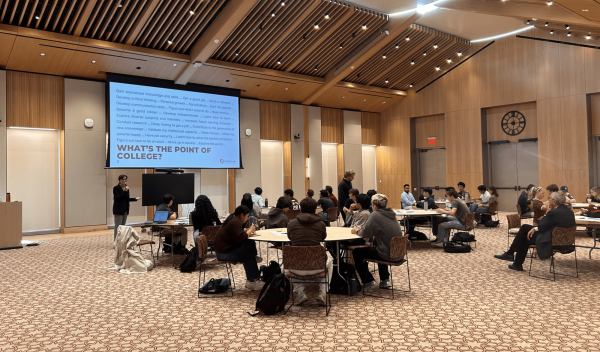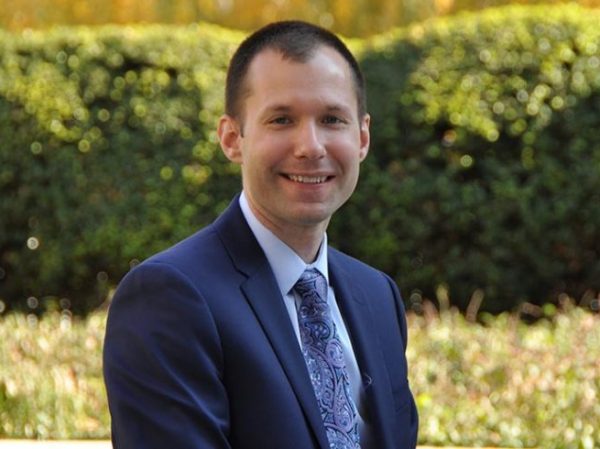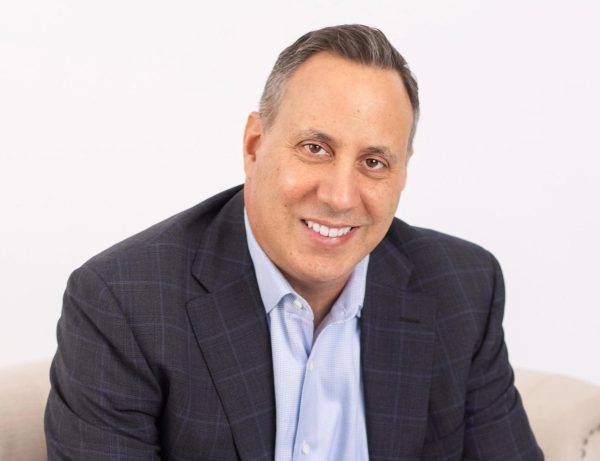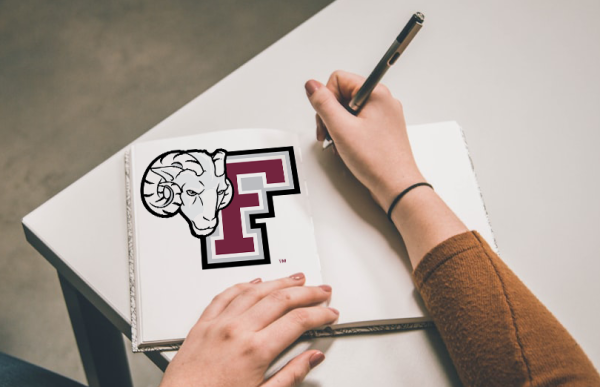Fordham Junior Researches Peptides
Ever since this past summer, Sophie Epstein, FCRH ’24, has been studying a particular peptide, or part of a protein, called SNEW. SNEW is named for the first four letters of its amino acid chain. Epstein is studying both integrative neuroscience and sociology and has been working on this research as a part of Nicholas Sawyer’s, Ph.D., lab on campus. Epstein and her lab partner, Jessica Tennett, FCRH ’23, are studying how this peptide can be linked to preventing some types of brain and spinal cord cancers. When SNEW is overexpressed it can act as an inhibitor for a system that can lead to these types of cancers.
“My job is to stabilize the structure of this peptide so that it can bind more easily to the target and therefore be a better inhibitor,” said Epstein.
Epstein explained that in the body the peptide binds to a polyproline two helix structure. The better that SNEW binds to that helix, the better job it will do of inhibiting this system of reactions. To make SNEW bind better, Epstein and Tennett used a process called cross-linking. Cross-linking is a process where two of the amino acids in the peptide structure are replaced with different amino acids that would hopefully serve as anchors for SNEW. The pair initially hypothesized that a 13 atom cross-linker would do the best job.
“It’s like if you had a Slinky and stretched it to fit an exact replica; if you made it smaller and tried to fit it, it wouldn’t. So this cross-linker should hold the Slinky so it’s exactly stretched, so that it doesn’t have to exert as much energy to bind properly,” said Epstein.
Over the summer, Epstein and Tennett tested this hypothesis with a multitude of different molecules and cross-linkers. From this work, Epstein moved into a different hypothesis which she is currently working on. She thinks that instead of a 13 atom cross-linker, a more rigid cross-linker would do a better job. Her hypothesis came after she found that the two cross-linkers that did the best job didn’t necessarily have 13 atoms, but were extremely rigid and restricted the rotation of the molecule.
A major part of Epstein’s job on a daily basis involves synthesis, which is the creation of the peptides. To do this, Epstein measures out the ingredients and how much she needs of each of them, and then she uses an automatic synthesizer. The automatic synthesizer is able to create the peptide in about one-eighth of the time it would take to do it by hand. After that, Epstein purifies the sample and uses high performance liquid chromatography and mass spectrometry to check her work.
“A lot of what we do is very organizational — if I go in without a set hourly to minute plan, it won’t really go right — I learned that the hard way,” Epstein said.
Another important aspect of Epstein’s lab work is using ELISA, or the enzyme-linked immunosorbent assay. ELISA is a 96-well plate that is coated with metal ions. Epstein adds the protein that usually does the binding to the receptor, the receptor itself, an antibody and the SNEW peptide to ELISA. They can see whether the SNEW peptide beats out the naturally-occurring protein that they already put in by observing how yellow the sample is, which is the function that the antibody serves.
“The concentration at which 50% of the reaction is inhibited, which we call IC-50, has been a good metric for how functional these peptides are,” said Epstein.
Epstein initially heard about this lab when she had Sawyer as a chemistry professor and interviewed him for the Fordham Undergraduate Research Journal. While she knew that working in a lab would be a beneficial reinforcement of what she was learning in the classroom, she also valued that this project dealt with a neuroscience question.
“The end goal is double-edged. We want this to become a drug someday that can hopefully treat cancer, but on the other hand, if we can find a generalizable approach to stabilizing polyproline two helices … it’s not just this particular system; it’s polyproline two helices in hundreds of systems that are important,” said Epstein.
As for herself and her future plans, Epstein loves working in a lab and learning about the research process. However, this project has reinforced her knowledge of one of the reasons she wants to become a doctor. She wants to work with people and values the human aspect of medical care, like making sure a patient is comfortable, cared for and understands the inequality they might face in their healthcare.
“While research has the science part that I love, it removes the people aspect in the immediate forefront … I think I’ll want to keep doing research, but I also know it’s not all I want to do,” said Epstein.
















































































































































































































Jules Epstein • Oct 13, 2022 at 3:25 pm
Brilliant concept , could have many important uses